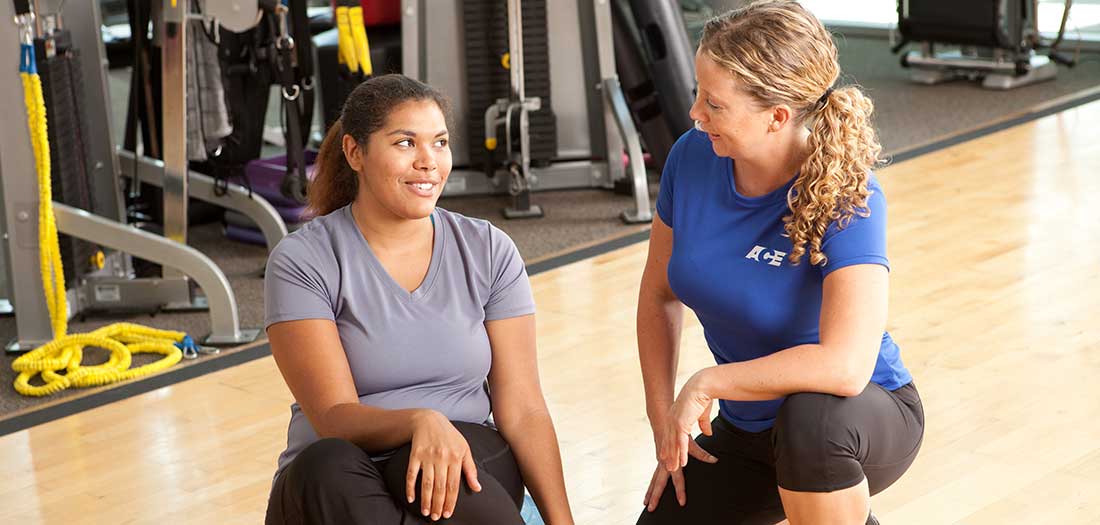As trainers, coaches and nutritionists, many of us have been making a significant mistake with our clients by focusing primarily on what to eat. I’ve made this mistake for more than 10 years. I’ve raved about the “eat this, not that” approach, used food models, calculated macros and figured out how to cut 500 calories from the diet, just to give you a few examples.
Obviously, nutrition is a vital part of weight loss and equally important to exercise in fitness and performance programs. Thus, focusing on what to eat and what not to eat is important, but it is far from the first step in helping your clients kick their current habits. A better approach is to initially focus on bringing about behavior changes before moving on to the “nuts and bolts” of nutrition.
To start, realize that as health and fitness professionals we are not the ones making any changes—our clients are making the changes. Our role is to create an environment for effective and positive change. Here are five ways we can create that type of environment:
1. Assess
Assessment is always a prerequisite to programming. However, in terms of nutrition and behavior change, you need to assess both the situation and your client’s current food intake and goals. It is vital to understand the stages of change model and interpret your client’s level of motivation and willingness to make changes. Often, merely getting your client to think about change while increasing self-awareness is sufficient for the initial consultation. In fact, this could be an enormous accomplishment given that willingness to change must precede any long-term habitual changes. If a client begins reading ingredient lists on foods, he or she may begin to realize what is going into his or her body. And this is a huge win, even if the client doesn’t immediately begin to eat better. You can gather all the information you need by asking the right questions and listening.

2. Listen
If the client does most of the talking, it’s a good thing. During consultations, listen and acknowledge your client’s words and emotions, and respond without judgment (Motivational Interviewing techniques are particularly effective). Also, ask open-ended questions (which don’t result in “yes” or “no” answers) and do not use leading questions, which guide clients to the response you expect instead of the reality of the situation.
Example: Rather than asking, “Do you eat breakfast?” ask, “What is the first thing you have to eat or drink in the morning?”
This type of question will provide you with their morning routine in addition to what foods and drinks they consume. After a response, paraphrase and check for understanding (once again, without judgment).
Example: Rather than asking, “So, you always skip breakfast?” ask, “In a typical work week, how many days do you eat something within an hour of waking up?” With the latter question, your client can begin to assess his or her own habits while answering your questions.
3. Make it seem like the client’s idea
During consultations, play the role of facilitator rather than trainer. Help your client brainstorm and then funnel down the ideas to specific action items that will spark lifestyle changes that progressively lead to desired outcomes. Consider the following example of a client who wants to return to a desired weight he reached in the past. The conversation may go something like this:
Pro: “You currently weigh 205, but you would like to weigh 180. When was the last time you were at, or near, 180 pounds?”
Client: “Five years ago.”
Pro: “What were some of the things you were doing five years ago that enabled you to weigh 180 pounds?”
Client: “Well, I had a different job that was less stressful; I was working out five days a week, bringing my lunch to work every day and drinking less alcohol.”
Your client essentially told you what he needs to do to lose weight: find an outlet for stress, exercise more, cook his own food and drink less alcohol (or some combination of these). You also know he has the potential for success because he has done it before. Now, your goal is to close that gap by figuring out where he is now, where he needs to be, and how the instant he walks out of the room, he can begin to take steps toward positive change.
4. Focus on setting habitual goals

Dozens of articles have discussed creating SMART goals with your clients. That’s because specific, measurable, attainable, relevant and timed-based goals are truly effective. However, we often skip the habits and focus directly on food and drinks.
Example: You want to help a client establish the long-term goal of eating a healthy breakfast every day. This goal, however, is unspecific and ineffective in the short term. Eating breakfast must be a habit before it is healthy. Here is a more effective short-term goal: “I will eat breakfast at least three out of the five work days next week.” Progress that goal to four days per week and then five. Along the way, introduce “eat this, not that,” concepts, but not before the routine of eating breakfast is established. Anyone can eat healthy for a week or for 30 days, but everyone struggles with sustaining a healthy eating plan.
5. Monitor and tweak as necessary
Nutrition and fitness goals are the same in that we need to reassess and potentially make changes every few weeks. Clients seeking change often create very lofty goals, but I advise my clients to set the bar low and crush a goal, rather than reach for the stars only to fall short. Accomplishing goals (even small ones) reinforces positive behavior.
Understanding the stages of change model, using motivational interviewing techniques and creating habit-based SMART goals is crucial to creating an environment for positive change. As a facilitator during consultations, listen to your client, check for understanding and paraphrase without judgment. Once habits are formed (or broken), then you can begin to recommend food swaps and reassess both behavior and the “nuts and bolts” along the way.




 by
by 





 by
by